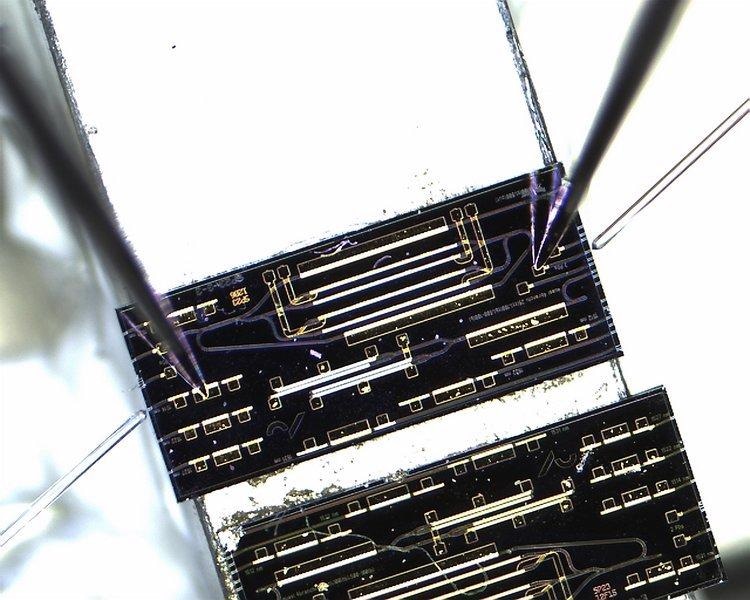Dec 2 2020
Photonics researchers from Aarhus University and the Technical University of Denmark DTU collaborated with chemical engineers and chemists to develop a new sensor system that can help reduce air pollution in Denmark considerably.
 Taken through the lens of a microscope, the picture shows a close-up of the photonic integrated circuit used for the ammonia detector. The chip is roughly 2 x 2.6 mm2 in size. Image Credit: Andreas Hänsel, Aarhus University.
Taken through the lens of a microscope, the picture shows a close-up of the photonic integrated circuit used for the ammonia detector. The chip is roughly 2 x 2.6 mm2 in size. Image Credit: Andreas Hänsel, Aarhus University.
The team has created an integrated optical sensor that works using the principles of modern telecommunication technology and quantifies ammonia in the atmosphere with the help of a gas sensor, a laser, and hollow-core optical fibers.
The researchers have reported the new sensor in the scientific journal MDPI Photonics.
Our device demonstrates that it is possible to carry out continuous ammonia monitoring for the agricultural sector, and because it is based on mature telecommunications technology, the system can be built at very low cost. At the same time, the system is very compact, and it meets the need for a portable, reliable and above all inexpensive system for detecting ammonia.
Andreas Hänsel, Postdoc, Aarhus University
Hänsel is part of the Photonic Integrated Circuits research group.
The sensor technology is still under development, and at present, the focus of the team is to improve the sensitivity of the equipment. Although the new sensor has been designed for ammonia detection, it can easily be modified to detect various other gases, such as greenhouse gases, added Hänsel.
The new technology has been created as part of the Ecometa project, which has been awarded funding of DKK 12.5 million from Innovation Fund Denmark.
For many years, the researchers have collaborated with major Danish technology companies and sought new techniques and advanced technology to quantify and minimize air pollution from the agricultural sector.
Currently, livestock production contributes to a major part of Danish air pollution, mainly from ammonia—one of the largest environmental issues for agriculture. But ammonia emissions are not quantified at the farm level at present. This is because such measurements are quite costly.
Ecometa is a very relevant research project with great prospects for agriculture. The ability to continuously and cost-effectively track the development in ammonia emissions from agriculture provides completely new opportunities for the industry to experiment on reducing the emissions.
Kent Myllerup, Head of Pig Innovation, SEGES
Myllerup is also the chairman of the steering committee for Ecometa.
According to Associate Professor Anders Feilberg, who leads Aarhus University’s part of the project, air pollution from agriculture is currently based on already established figures, but the future potential of constant farm level measurements could be an impetus in the green transformation of the industry.
The new technology takes us one step closer to enabling farmers to monitor their emissions continuously. With accurate monitoring of ammonia emissions from sheds and stables, farmers can streamline operations far better. This takes us closer to emissions-based regulation using measured emissions, and it can significantly reduce the environmental impact of agriculture.
Anders Feilberg, Associate Professor, Aarhus University
The project will continue until 2021 and will help conform to Denmark’s international commitments toward the environment, specifically in relation to ammonia.
AU Department of Engineering, DTU Photonics, AU Department of Bioscience, SEGES, Agrifarm Innovation Aps, Infuser Aps, AU Interdisciplinary Nanoscience Center, Wageningen Livestock Research (NL) are the collaborative partners in the Ecometa project.
Journal Reference:
Hänsel, A., et al. (2020) Integrated Ammonia Sensor Using a Telecom Photonic Integrated Circuit and a Hollow Core Fiber. MDPI Photonics. doi.org/10.3390/photonics7040093.